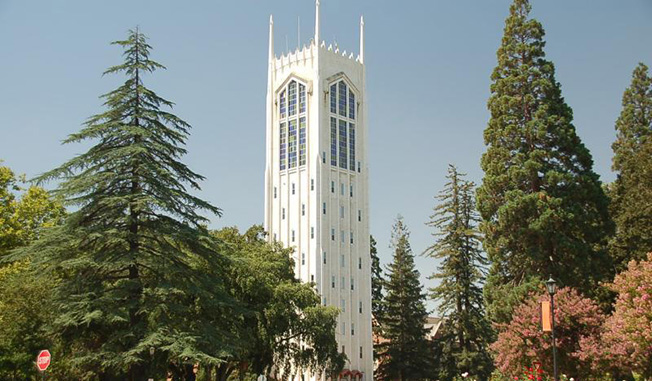A faculty vote of no confidence against a college president is a common enough event; sometimes there is more pique than substance. But there are some significant issues at the University of the Pacific. Following an announcement of tuition increases paired with budget cuts for the third year in a row, 95% of the University of Pacific faculty voted for the ouster of president Pamela Eibeck. Students quickly joined the protest. Some spray-painted boulders on campus with the phrase “Eibeck = $580,000,” referring to her salary—which was not included in proposed budget cuts, and is rather high for a school of little over 6,250 students.

Fiscal austerity measures are almost always painful, and community members rarely agree on what should and shouldn’t get cut. But a lack of transparency about the administration’s goals, financial woes, and spending habits will almost always escalate the tensions.
The plan this year is to increase tuition by 3% and cut spending by 10%. This would reasonably be seen as a sign of financial distress, yet Board of Regents chairman Kevin Huber claims that the institution is financially sound. The leadership’s mixed signals have led faculty to assume that the University is covering up financial mismanagement and has secretly been “bleeding funds”—to quote one professor.
Not surprisingly, the University is party to wild speculation and finger pointing. The athletic department, in particular, has taken blame for the alleged losses as Eibeck, in a rare bit of transparency, revealed that the athletic department went $4.2 million over budget in the 2017 fiscal year. The faculty’s vote of no confidence also cites a slew of administrative hires and poor investment strategies to explain the shortfall.
The University of the Pacific’s financial struggles provides a valuable lesson in crisis management.
And the faculty might be on to something: Federal data that the American Council of Trustees and Alumni has analyzed shows that the University of the Pacific spends 47 cents on administrative costs for every dollar spent on instruction. For reference, the University’s self-selected peer institutions spend a median of 29 cents on administration for each dollar spent on teaching.
The University of the Pacific’s financial struggles provides a valuable lesson in crisis management. The University has clearly been struggling with its budget for some time. If it had set budgetary priorities and made cost-cutting a priority several years ago, morale would not have imploded in the manner that it has.
Providing a high quality education in the most cost-effective possible manner is the only reliable way forward.
Another lesson is simply the need for transparency and accountability. A frank assessment of financial problems would have limited wild speculation and conspiracy theories. Public discussion of the plan for eliminating programs would have reduced faculty angst. And, lastly, leadership matters. If Eibeck, who has been in office for a decade, had accepted responsibility for the crisis, and perhaps cut her salary as a form of solidarity, the faculty would likely have rallied around her to help solve the issue.
These are challenging times for higher education. The college-bound population is decreasing, and competition among colleges and universities for enrollment is intense. Providing a high quality education in the most cost-effective possible manner is the only reliable way forward. The leadership of the University of the Pacific needs to take a hard and careful look at its priorities.
